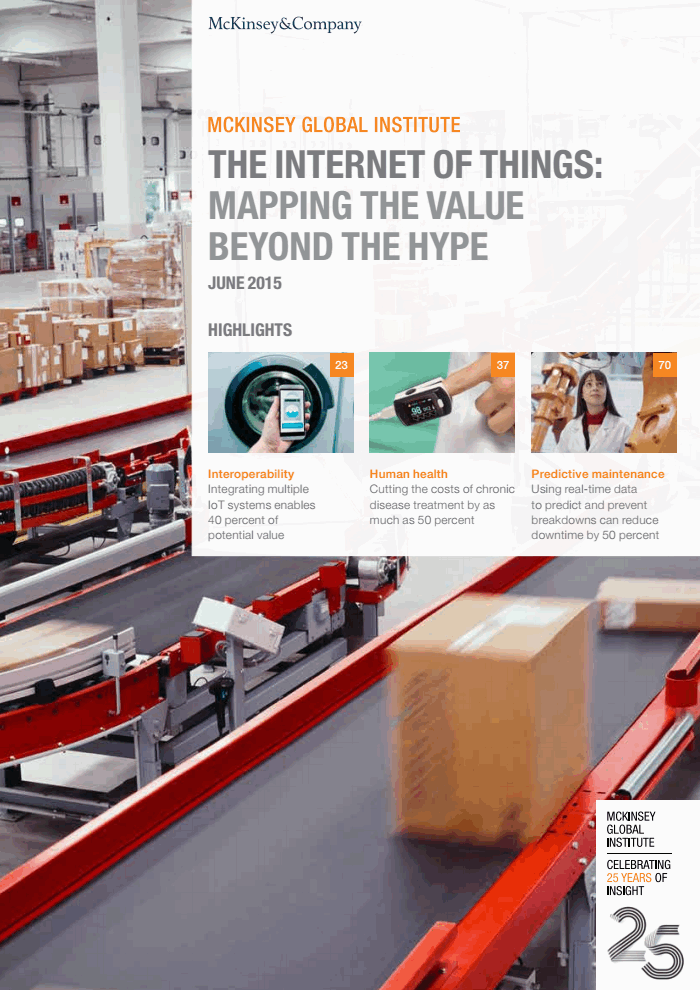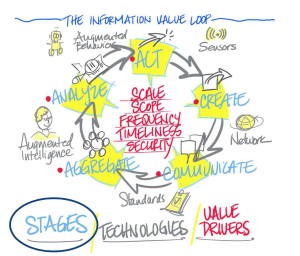I haven’t been as excited about anything for a long time as I am about a global revolution that began last week in Amsterdam!
Cities are rapidly becoming the very visible and innovative laboratories for IoT innovation, which is logical, because they’ve been in the forefront of open data — as I saw first-hand when I was consulting for Vivek Kundra when he opened up vast amounts of real-time data as CTO for the District of Columbia as part of its Apps for Democracy initiative in 2008 that was part of the larger democratizing data movement.
Now there’s an exciting new development in Amsterdam, that really is bringing power to the people: The Things Network, the first crowdsourced free citywide IoT district. Astonishingly, volunteers brought the whole system to launch in only four weeks!
So far, the creators are visualizing a wide range of uses, but I particularly liked a particularly local one for a city synonymous with canals:
“A pilot project to demonstrate the Things Network’s potential will see boat owners in the city (there are many, thanks to its network of canals) able to place a small bowl in the base of their vessel. If the boat develops a leak and starts taking on water, the bowl will use the network to send an SMS alert to a boat maintenance company that will come along and fix the problem.”
How cool is that? It also illustrates what I think is one of the key intangibles about the IoT: when you empower everyone (and I mean that literally!) by opening up data, people will find more and more innovative IoT devices and services, stimulated by their own particular needs, desires — and sometimes, even pain (that’s why I think even the most optimistic views of the IoT’s impact will be dwarfed as it becomes ubiquitous!).
Even more exciting, the group’s goal is to bring the technology to every city in the world! That, my friends, will be an incredible global game-changer. Think of it: EVERY city will become an open laboratory for change.
The Things Network uses low-power, low-bandwidth LoRaWAN technology to create the network: ten $1,200 hubs covered the whole city! Having been hiding under a rock, I must admit I’d never heard of LoRaWan. Here are the benefits:
- don’t need 3G or WiFi to connect with the Internet — no WiFi passwords, mobile subscriptions
- no setup costs
- low battery usage
- long range
- low bandwidth.
The whole scheme reminds me of the old Andy-Hardy-it’s-crazy-enough-it-might-work thinking:
“Dutch entrepreneur Wienke Giezeman came up with the idea for the Things Network just six weeks ago when he came across a €1,000 ($1,100) LoRaWAN gateway device and realized that with 10 such devices, the whole of Amsterdam could be covered. He pitched his idea at an Internet of Things meetup in the city and received a positive response.
“Work then began to create a community-owned data network that developers could build on top of without any proprietary restrictions. Companies including The Next Web and accountancy giant KPMG have agreed to host gateway devices at their premises, and the City of Amsterdam local authority is enthusiastic about the idea.”
“Because the costs are very low, we do not have to rely on large telco corporations to build such a network. Instead, we can crowdsource the network and make it public without any form of subscription. Our mission is to enable a network by the users for the users.” (my emphasis)
Most important from a democratizing data standpoint, it will all be open source:
“Our goal is to make the network architecture as decentralized as possible. And avoid any points of failure or control. We already have a community of 10 developers writing network software and equipment firmware.”
Giezeman wants to cut the cost before launching his plan of making the concept worldwide. He will soon launch a Kickstarter campaign to fund production of a smaller, €200 ($220) LoRaWan (vs. the $1,200 current ones). He may offer consulting services to capitalize on the idea, but that’s not the current priority.
That kind of openness and lack of strings attached, IMHO, is going to really lead to incredible innovation! We’re holding a Boston IoT MeetUp hackathon next month to try to bring similar innovation to The Hub, and wouldn’t it be wonderful if cities everywhere launched a virtuous competition to speed smart cities’ adoption (and, don’t forget: this has huge implications for companies as well: there’s nothing to stop smart companies from creating new products and services to capitalize on the shared data!).
I note Amsterdam is 84 square miles, and The Hub of the Universe is 89 sq. miles, so I suspect the costs would be similar here. I’m throwing down the gauntlet: let’s make Boston the second IoT city!
Let a thousand neighborhoods bloom!





